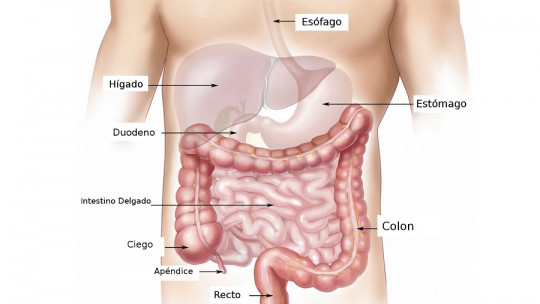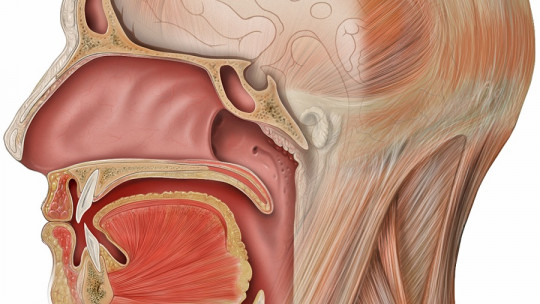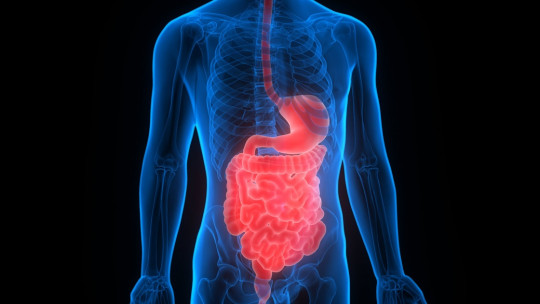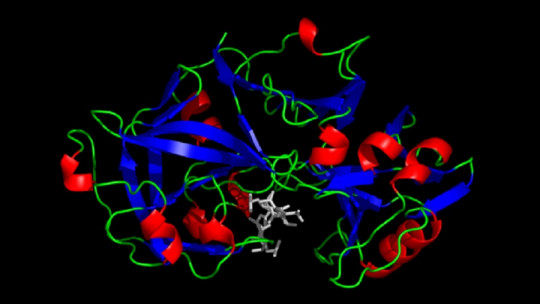
The digestive system is essential for the life of vertebrates (and any minimally complex living being at a physiological level). We are heterotrophic living entities and, therefore, we require eating food to obtain the energy necessary to maintain cellular homeostasis.
Furthermore, many of the compounds we need for life (macro and micronutrients) are not synthesizable through metabolism, so we must obtain them entirely from what we eat.
Digestion begins from the moment the food enters our mouth, since the saliva itself and the oral bacterial microbiota secrete compounds that allow the disintegration process to begin. After the food has been crushed and mixed with the oral fluids, the resulting product (food bolus) travels through the esophagus, through a series of peristaltic movements and some voluntary actions.
After this first contact with the body, the food reaches the stomach, where much of the digestive “magic” occurs. Enzymes such as lipases, peptidases and carbohydrases are responsible for breaking down macronutrients into assimilable metabolites that cross the stomach barrier.
In any case, this entire delicate process can be disrupted if the stomach physiology suffers any imbalance. Here we present you the most common stomach diseases and its particularities.
What are the most common stomach diseases?
The stomach is an essential organ for digestion that is located between the esophagus and the small intestine Protein digestion begins there, whose basic units (amino acids) are the building material of all living tissues. This organ has three main functions: storing food, mixing it with gastric acids and enzymes, and sending the mixture to the small intestine.
Indigestion and heartburn are some of the most common gastric problems in society, but these do not usually lead to a serious clinical entity. In any case, the United States National Library of Medicine tells us that the presence of blood in the stool, severe abdominal pain, heartburn that does not improve with drugs, unintentional weight loss or persistent diarrhea are always reasons. of a visit to the emergency room.
Most stomach diseases manifest with similar symptoms and clinical signs, but each of them has its particularities and differential features. Below, we present the most common and relevant ones at a medical level.
1. Gastritis
Gastritis is a general term that It encompasses various diseases, all with one thing in common: inflammation of the stomach lining Some of its symptoms are indigestion (burning and acidity located in the upper part of the abdomen), nausea, vomiting and a feeling of fullness in the upper abdominal part after eating food. All these signs are due to the action of gastric juices, which affect the digestive tissue when the mucosal barriers are not in their best condition.
According to epidemiological studies, Gastritis affects 25% of the world’s population, making it one of the most common stomach conditions Below, we list some of the usual causes of gastritis. Do not miss it:
2. Peptic ulcer
A peptic ulcer is defined as an open sore or raw area that occurs on the lining of the stomach or intestine Drinking too much alcohol, constant use of acetylsalicylic acid (aspirin), smoking, radiation treatments, or stress can promote the development of a peptic ulcer. It is estimated that the probabilities of experiencing this entity throughout life in the general population range from 5 to 10%.
In any case, the chances of developing this lesion in people infected by H. pylori They increase up to 20%, due to the damage that these bacteria cause to the cells of the intestinal epithelium. Ulcers are evidenced by symptoms such as abdominal pain (more evident at night), nausea, vomiting, black stools (due to blood, which has been partially digested), chest pain, fatigue and weight loss, among other signs.

3. Functional dyspepsia (non-ulcer)
Dyspepsia is a term that refers to discomfort or pain that occurs in the upper part of the abdomen (epigastrium)
Among the most common symptoms of dyspepsia are pain, burning, a feeling of early fullness, fullness, bloating, diarrhea and nausea. In any case, on this occasion the signology has no apparent medical cause.
Dyspepsia affects one in 5 people in the world (20%) Of all patients, only 40% of them seek help in primary care. Even so, up to 70% of people who go to the doctor with dyspepsia leave the center without a diagnosis.
4. Stomach cancer
In the United States alone, 26,560 cases of stomach cancer are diagnosed each year, with a clear bias towards the male gender (16,160 and 10,400, respectively). In addition, about 11,800 people die in this region each year from this malignant neoplasm, because it is detected too late or the tumor progresses too quickly.
Unfortunately, stomach cancer is not usually diagnosed in its early stages, as it does not cause specific symptoms. Furthermore, when these occur they are usually general, ambiguous and easily confused with other less serious entities.
A patient with stomach cancer will experience indigestion, heartburn, feeling full, loss of appetite, diarrhea or constipation and feeling that food is stuck somewhere.
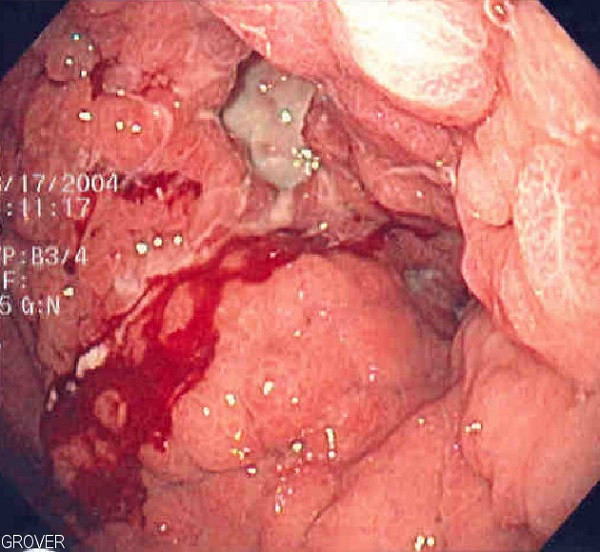
As you can see, almost all of these signs and symptoms are similar to those of gastritis or functional dyspepsia. In any case, the most common sign that sets off the alarm is hemorrhage, which is blackish in color in the stool and more normal in vomit. This is the most illuminating symptom in 50% of stomach cancer cases.
At this point, it should be noted that stomach cancer has many clear controllable triggers. For example, Obesity and smoking have been shown to dramatically increase the chances of developing this malignancy over time In many cases, cancer can be avoided (or minimize the risk of developing) by leading a healthy lifestyle.
5. Gastroparesis or gastroparesis
Gastroparesis, also known as gastroparesis, is a clinical entity that affects the motility of the stomach (caused by natural involuntary contractions). In a normal situation, muscle contractions cause the movement of the digested bolus to the following portions of the digestive system. On the other hand, In gastroparesis, the stomach does not empty properly due to a lack of gastric contractions
In any case, it should be noted that gastroparesis is an exceptional clinical entity, as 14 cases occur in less than every 100,000 people. The causes of this disease are not yet fully known, but in many cases damage to the nerve that controls the stomach muscles (vagus) is suspected.
Summary
These clinical entities may seem few to you, but we emphasize that we have only investigated those diseases that involve the stomach. Many others (such as Crohn’s disease, celiac disease, irritable bowel syndrome, intestinal cancer or enteric infections) are pathologies that are limited to the large or small intestine and, therefore, are not considered stomach diseases per se.
In general, a gastric pathology manifests itself with pain in the upper part of the stomach (epigastrium), with symptoms such as constant fullness, nausea, the urge to vomit or brownish blood in the stool. On the other hand, intestinal diseases are characterized much more by the appearance of copious diarrhea and the presence of bright diarrhea in the stools.


